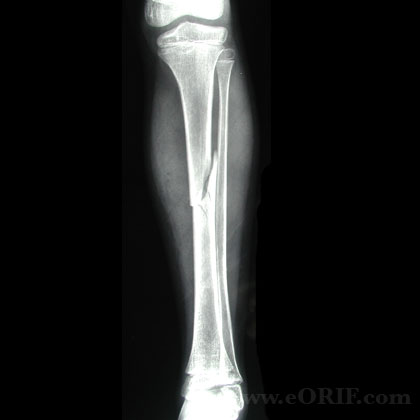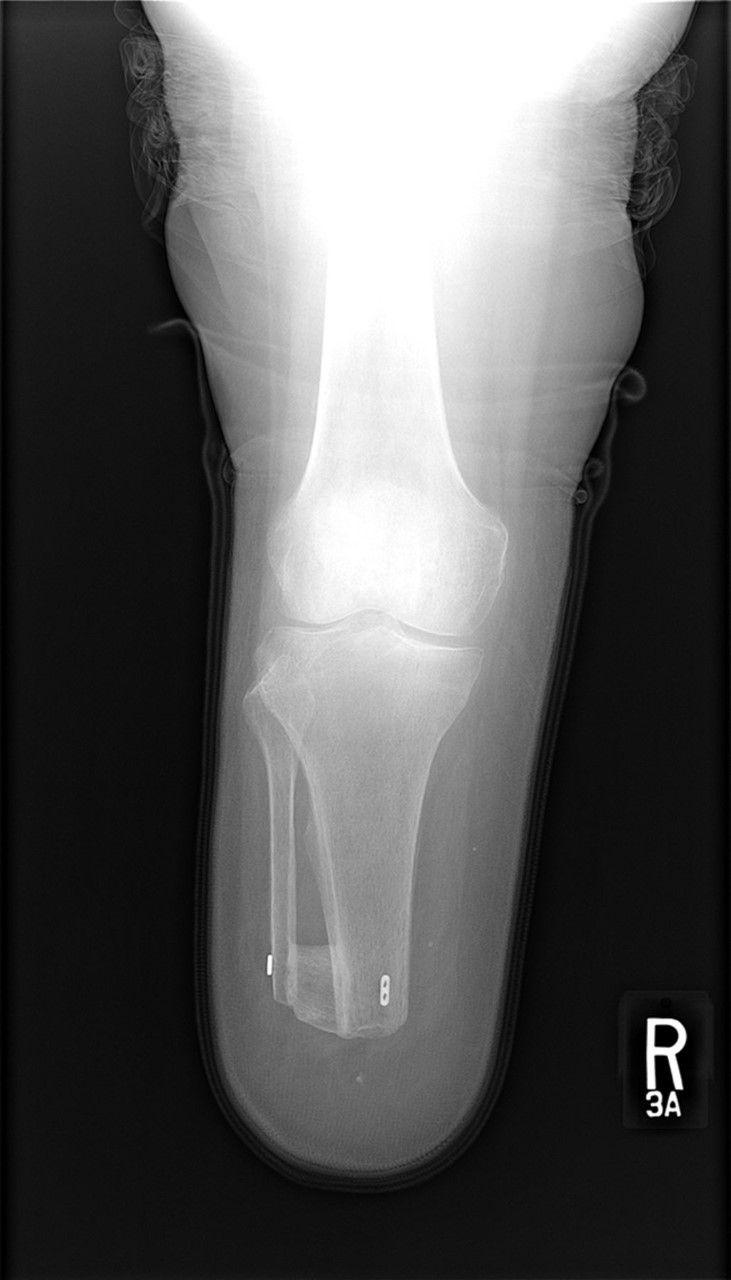Case Vignette
Just How Innocuous Is A Tibial Fracture?

A 17 year old boy on a work experience programme at a cattle station in the Northern Territory fell from a horse. He sustained a fracture of his left tibia (shin bone). He was wearing shorts and boots at the time. Clinical examination confirmed a 1cm laceration over the mid third of the shin, at the level of the tibial fracture.
He was air lifted to a major hospital, underwent an orthopaedic operation and the wound was closed primarily. The accident occurred on a Tuesday.
By the Saturday, he had undergone a below knee amputation.

So What Happened?
In the intervening four days, he developed gas gangrene. This is an overwhelming infection caused by the bacterium Clostridium welchii. It is a bacterium that is found in a number of locations including the faeces from livestock. He had suffered a compound fracture. It is probable that a spike of bone protruded through the skin and then retracted spontaneously. The spike was presumably contaminated with enough material containing the Clostridium bacterium to potentiate an infection. The Clostridium bacterium proliferates best in the absence of oxygen. Because the wound was closed, the tissue was devitalised (de-oxygenated) and any form of antibiotic therapy could not pervade the region successfully, an ideal incubator for the bacterium was created. Over the next 48 to 72 hours, an overwhelming life-threatening infection developed. It was either remove the limb or lose his life.
This was a particularly salutary experience for all involved. Had the wound been left open, had adequate wound toilet been performed and had the incubation environment not been created, a much more satisfactory outcome may have been experienced.
So, we have both personal injury as a result of the work environment AND possible medical negligence. This will be an interesting case.
